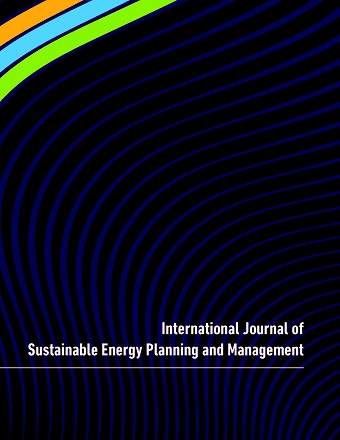A planning perspective on Hydropower Development in the Indian Himalayan Region
Main Article Content
Abstract
The Indian Power Sector(IPS) is under gradual transition from over-reliant fossil fuel (62%) to Sustainable Energy Source(SES), primarily to achieve targets of SDGs and the Paris Agreement to base 40% of the total power generation capacity on non-fossil fuel resources by 2030. In this context, the solar power generation is on the fast-track whereas, hydropower development is lagging behind due to various reasons causing time and cost escalation, hence the sustainability of IPS in terms of flexibility and reliability in integration with other Renewable Energy Source will remain a challenge. With this concern, the focus of this study is to (i) analyze and prioritize the hydropower potential (HPP) in the Indian Himalayan Region, (ii) identify the prime constraints in the way of hydropower development and (iii) discuss the way-forward for sustainable planning of hydropower development whilst appropriately managing time & cost over-runs including socio-environmental concerns. The methodology involves literature review and analysis of secondary data about IPS, hydropower resources and project-specific risks prevalent in ongoing HEPs in India. The result shows that the Indian Himalayan Region has enough (73%) balance HPP in 12 different States; sustainable harnessing of which requires
proper addressing of the prime constraints viz., multiple public consultations in clearance process, litigations, high investment, socio-political and contractual issues, mainly through procedural reforms by the State Governments which have constitutional right over land and water in the federal structure of India. The finding of study will be useful for planning process of entrepreneurs, investors and policy makers in the direction to achieve the target of SES beyond India’s Nationally Determined Contribution.
Article Details
Articles published in International Journal of Sustainable Energy Planning and Management are following the license Creative Commons Attribution-NonCommercial-NoDerivs 3.0 Unported (CC BY-NC-ND 3.0)
Authors retain copyright and grant the journal right of first publication with the work simultaneously licensed under a Creative Commons Attribution License: Attribution - NonCommercial - NoDerivs (by-nc-nd). Further information about Creative Commons
Authors can archive post-print (final draft post-refereering) on personal websites or institutional repositories under these conditions:
- Publishers version cannot be stored elsewhere but on publishers homepage
- Published source must be acknowledged
- Must link to publisher version

